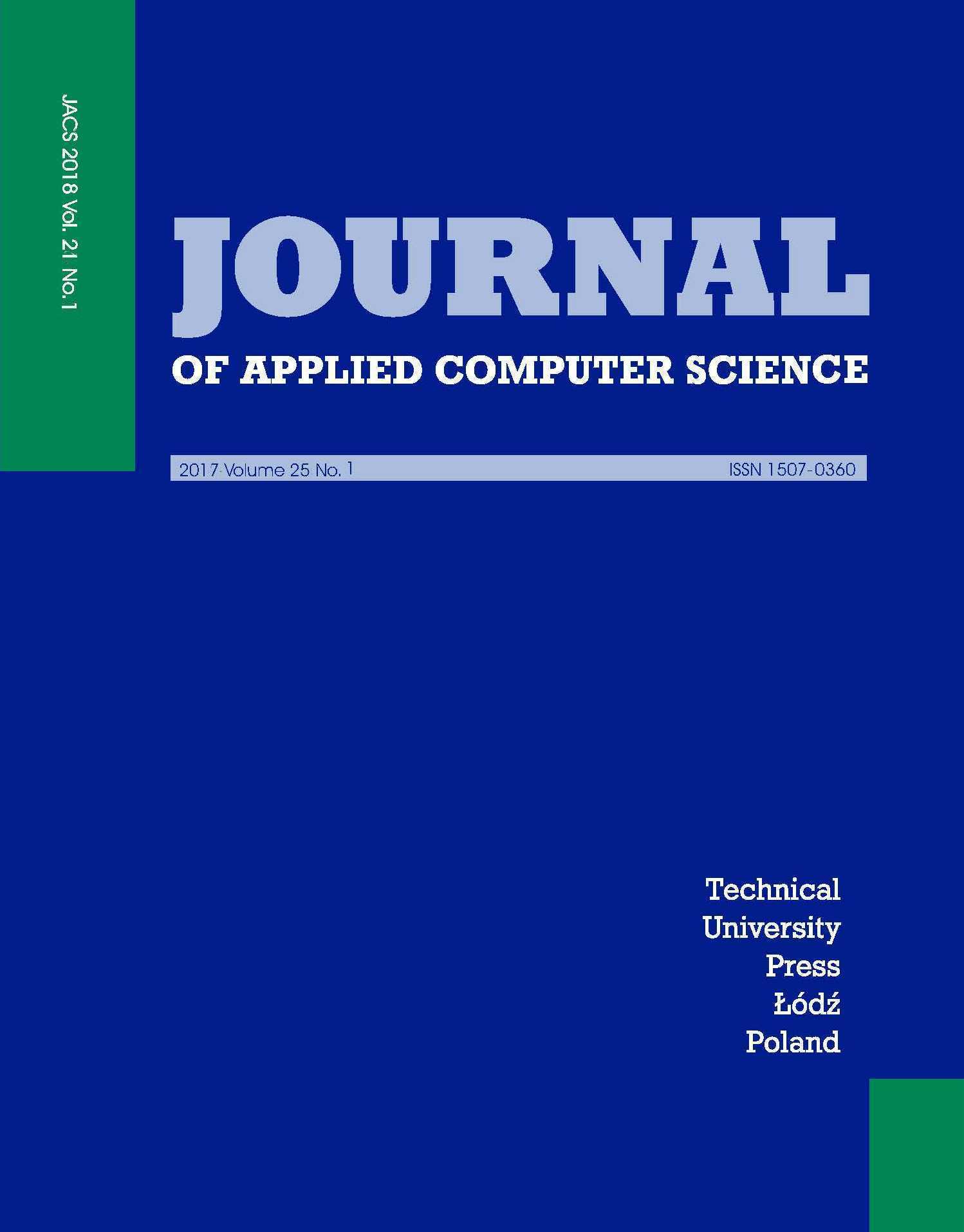Abstract
In this paper neuro-fuzzy approach for medical data processing is considered. Special capacities for methods and systems of Computational Intelligence were introduced for Medical Data Mining tasks, like transparency and interpretability of obtained results, ability to classify nonconvex and overlapped classes that correspond to various diagnoses, necessity to process data in online mode and so on. Architecture based on the multidimensional neo-fuzzy-neuron was designed for situation of many diagnoses. For multidimensional neo-fuzzy-neuron adaptive learning algorithms that are a modification of Widrow-Hoff algorithm were introduced. This system was approbate on nervous system diseases data set from University of California Irvine (UCI) Repository and show high level of classification results.
References
Rizzo, R. and Lisboa, P. J. G., editors, Computational Intelligence Methods for Bioinformatics and Biostatistics, Vol. 6685 of Lecture Notes in Bioinformatics, 7th International Meeting, CIBIB 2010, Palermo, Italy, September 16-18, 2010, Revised Selected Papers, Springer-Verlag Berlin Heidelberg, 2011.
Kountchev, R. and Iantovics, B., editors, Advances in Intelligent Analysis of Medical Data and Decision Support Systems, Vol. 473 of Studies in Computational Intelligence, Springer International Publishing, 2013.
Ruthowski, L., Computational Intelligence. Methods and Techniques, Springer-Verlag Berlin Heidelberg, 2008.
NINDS Parkinson’s Disease Information Page, (http://www.ninds.nih.gov/disorders/parkinsons_disease/parkinsons_disease.htm), 2016, Online; accessed 29-October-2016.
Sveinbjornsdotti, S., The clinical symptoms of Parkinson’s disease, Journal of Neurochemistry, Vol. 139, 2016, pp. 318–324.
Kalia, L. and Lang, A., Parkinson’s disease, The Lancet, Vol. 386, No. 9996, 2015, pp. 896–912.
Theo, V. and et al., Global, regional, and national incidence, prevalence, and years lived with disability for 301 acute and chronic diseases and injuries in 188 countries, 1990–2013: a systematic analysis for the Global Burden of Disease Study 2013, The Lancet, Vol. 386, No. 9995, 2015, pp. 743 – 800.
Theo, V. and et al., Global, regional, and national age–sex specific all-cause and cause-specific mortality for 240 causes of death, 1990–2013: a systematic analysis for the Global Burden of Disease Study 2013, The Lancet, Vol. 385, No. 9963, 2015, pp. 117 – 171.
Carroll, W. M., International Neurology, John Wiley and Sons, 2016.
Jankovic, J., Parkinson’s disease: clinical features and diagnosis, Journal of Neurology, Neurosurgery, and Psychiatry, Vol. 79, 2008, pp. 368 – 376.
Widrow, B. and Hoff, J. M., Adaptive switching circuits, Vol. 4, IRE Western Electric Show and Convention (WESCON), 1960.
Cichocki, A. and Unbehauen, R., Neural Networks for Optimization and Signal Processing, Stuttgart: B.G. Teubner, 1993.
Winter, R. and Widrow, B., MADALINE RULE II: A training algorithm for neural networks, In: IEEE International Conference on Neural Networks, 1988, pp. 401–408.
Jang, J.-S., Sun, C.-T., and Mizutani, E., Neuro-Fuzzy and Soft Computing, Prentice Hall, Upper Saddle River, NJ, 1997.
Yamakawa, T., Uchino, E., Miki, T., and Kusanagi, H., A neo fuzzy neuron and its applications to system identification and prediction of the system behaviour, In: Proc. 2nd Int. Conf. on Fuzzy Logic and Neural Networks, Stuttgart: B.G. Teubner, 1992, pp. 477–483.
Miki, T. and Yamakawa, T., Analog implementation of neo-fuzzy neuron and its on-board learning, Computational Intelligence and Applications, 1999, pp. 144–149.
Perova, I., Pliss, I., Churyumov, G., Eze, F., and Mahmoud, S. M. K., NeoFuzzy Approach for Medical Diagnostics Tasks in Online-Mode, In: Proc. 2016 IEEE First International Conference on Data Stream Mining and Processing (DSMP), Lviv, Ukraine, 2016, pp. 34–37.
Landim, R., Rodrigues, B., Silva, S., and Matos, W., A neo-fuzzy-neuron with real-time training applied to flux observer for an induction motor, In: Proc. Vth Brazilian Symp. on Neural Networks, Los Alamitos, CA: IEEE Computes Society, 1998, pp. 67–72.
Bodyanskiy, Y., Kokshenev, I., and Kolodyazhniy, V., An adaptive learning algorithm for a neo-fuzzy neuron, In: Proc. 3-rd Int. Conf. of European Union Society for Fuzzy Logic and Technology EUSFLAT 2003, Zittau, Germany, 2003, pp. 375–379.
Bodyanskiy, Y., Tishchenko, O., and Kopaliani, D., Multidimentional timerow prediction using adaptive neuro-fuzzy model, In: Proc. of NU Lviv Politechnics. Computer sciences and information technologies, Vol. 744, 2012, pp. 312–318, (in Ukrainian).
Bodyanskiy, Y., Tishchenko, O., and Wojcik, W., Multivariate non-stationary time series predictor based on an adaptive neuro-fuzzy approach, Vol. 8, 2013, pp. 10–13.
Little, M., McSharry, P., Roberts, S., Costello, D., and Moroz, I., Exploiting Nonlinear Recurrence and Fractal Scaling Properties for Voice Disorder Detection, BioMedical Engineering OnLine, Vol. 6:23, 2007.

